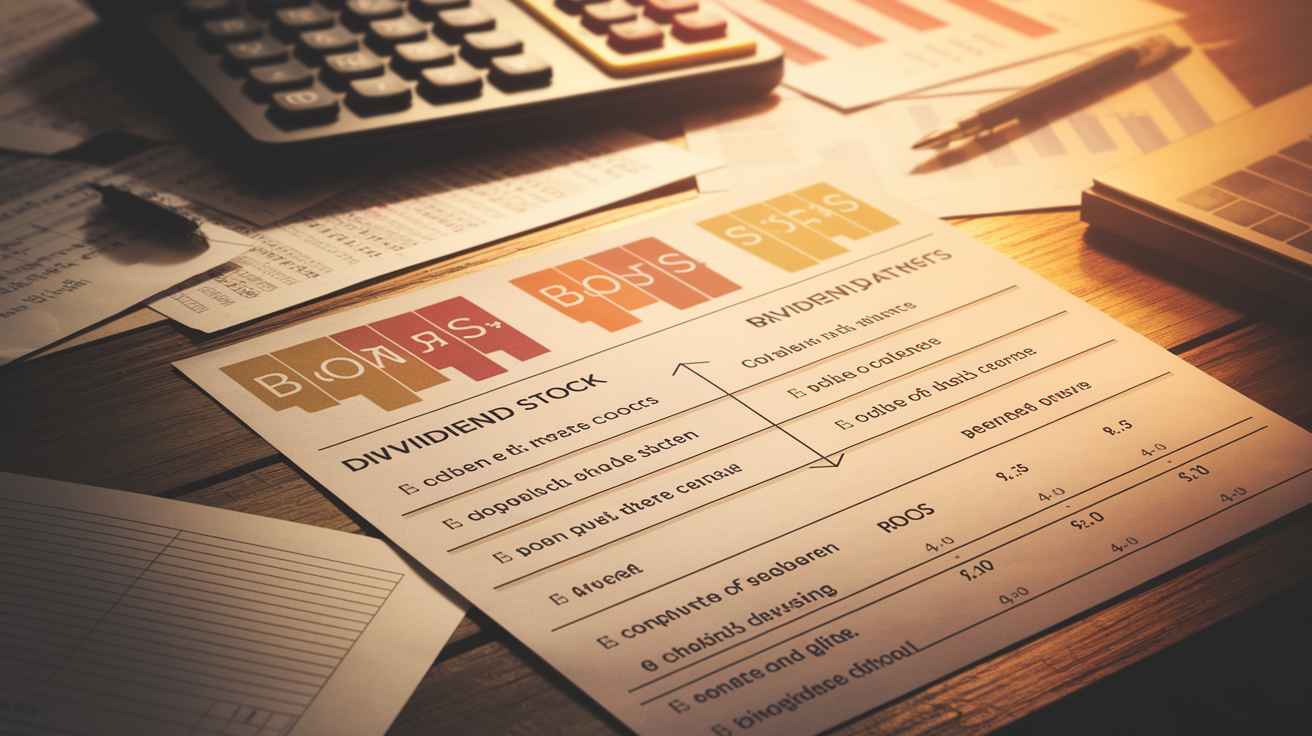Income investors often face the choice between bonds and dividend stocks, two forms of investment that offer different advantages and risks. While bonds promise predictable interest returns and stability, dividend stocks attract with higher yields and growth potential. This article will explore the pros and cons of both options and provide insights into suitable investment strategies to aid investors in their decision.
Bonds vs. Dividend Stocks: The Balance Between Stability and Growth

In the world of financial investments, income investors often face a significant dilemma: the choice between the stable but lower returns of bonds and the potentially more lucrative yet volatile dividend stocks. These two asset classes offer unique advantages and challenges, making them attractive or less so depending on the investment strategy.
Bonds are traditionally considered safe havens in the stormy seas of financial markets. Their stability comes from the fixed nature of interest payments, which represent a predictable source of income. For risk-averse investors, this predictability is a reassuring constant, especially in times of economic uncertainty. Sovereign bonds, as paradigmatic examples of this class, protect against the volatility that can hit stock markets. However, all this stability comes at a price. In a low-interest-rate environment, real returns can be significantly eroded by inflation, and it is therefore not surprising that bonds, despite their safety, can sometimes be considered unattractive when the purchasing power of returns diminishes.
On the other side of the spectrum are dividend stocks, which attract with their mix of income and growth potential. Companies that regularly distribute dividends provide investors with a steady income stream, along with the possibility of capital growth. Especially in an inflationary context, these stocks can serve as a natural hedge, as dividends tend to increase with the general economic upturn. On the downside, however, there is increased volatility: stock markets react sensitively to a variety of factors, and even established companies may reduce their distributions during economic turmoil.
A crucial difference between these investment forms lies in the risk profile. While bonds emphasize credit risk and interest rate fluctuation risk, investors in dividend stocks must contend with market risks. This balance between safety and yield presents income investors with the challenge of carefully analyzing their risk-return ratio.
To wisely pursue their income strategies, a diversified approach that includes both bonds and dividend stocks may provide the right balance. This way, investors could leverage the stability of bonds to cushion the fluctuations of the stock market while simultaneously benefiting from the yield opportunities of dividend stocks. Ultimately, the choice between these instruments depends on individual goals and investors’ risk propensity, but the combination of both can lead to a harmoniously balanced portfolio.
Strategic Financial Planning: The Choice Between Safety and Growth

For income investors, the decision between bonds and dividend stocks is at the heart of strategic income planning considerations. Both asset classes offer distinct advantages and challenges, varying based on individual needs and market conditions.
Bonds, primarily attributed to stable yields and low volatility, are popular among investors who value safety. In particular, sovereign bonds are considered nearly risk-free investments, as they are issued by governments that historically have reliably met their financial obligations, bolstering investor confidence. At the same time, predictable interest payments represent a compelling factor for those who value steady returns.
On the other side of this stable coin are dividend stocks. These promise potentially higher returns and offer, in addition to regular dividend payments, the prospect of capital gains. This makes them particularly attractive for those investors who wish to maintain their positions long-term and benefit from economic development and company success. However, a greater risk appetite is necessary to handle market temperaments and face fluctuations calmly.
Within an investment strategy, diversification is key to distributing risk while at the same time benefiting from the respective advantages of investment products. A balanced mix of bonds and dividend stocks can make a portfolio more robust and ensure a stable source of income. In this, the individual risk profile of the investor plays a central role. Those who are safety-conscious will tend to have a higher percentage of bonds, while more adventurous investors will capitalize on the growth potential of dividend stocks.
For targeted and sustainable income planning, there is no alternative to a careful analysis of market conditions and a clear definition of investment goals. This enables investors to align their risk appetite with yield objectives, allowing them to strategically benefit from market opportunities that bonds and dividend stocks can offer in a balanced relationship.